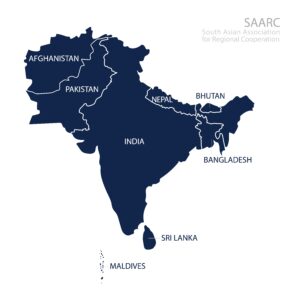By Amber Afreen Abid 17 June 2021
Technological innovation has always been a significant point in the military realm. The emergence of Artificial Intelligence (AI) is a candid example of the Revolution in Military Affairs (RMA). AI is a dual-use technology with implications in both military and civilian spheres. It is not a new concept; rather, its use in the military domain has been there for years. The advancement in AI can significantly alter the strategic landscape. The modernization in AI could potentially shape the future global nuclear order; since the functionality of AI in nuclear weapon systems is improving. Thus, the improvement in technology will play a significant role in transforming the nature of warfare.
AI has a wide range of impacts on intelligence, information gathering, command and control, and defence, on the one hand, and casts doubt on the survivability of one’s second-strike capability, on the other hand. This could lead to both over-trust and under-trust in technology, as the machines would be difficult to handle in case of crisis or calamity. The vulnerabilities in cybersecurity and the rapid change in technology, the force postures, and the nuclear policies of the states will also be significantly changed. The use of AI in the non-nuclear military realm can also potentially affect the nuclear sphere.
AI does not function alone. It is integrated into other technologies, and its effect depends upon the type of technology it is integrated with. It has exceptionally wider applications and is more convenient than nuclear technology. AI is thus not limited to the direct application of nuclear weapons; its appliance on non-nuclear technology increases the chances of detecting nuclear arsenals by the enemy, thus making the first strike of the enemy more successful. The precision targeting of the conventional weapons could also be increased, thus enabling the target of hardcore military assets. AI also opens an array of domains of warfare, thus increasing the vulnerability of nuclear technology and amplifying the chances of retaliation.
The risk of using nuclear weapons has increased significantly, considering the multi-polar world, the competitive inter-state strategic environment, and the continuous innovation in technological affairs. The AI application could significantly increase the speed and decision-making time, which could grind down the Nuclear Command and Control Systems, thereby increasing the chances of escalation in a conflict. Furthermore, if the means of intelligence gathering would be compromised, the probability of a first strike or blind strike would significantly increase.
In the South Asian context, the emergence of AI and its military applications has made significant progress in recent years. Specifically, India is impatient to dominate this domain and seems to prefer the military application of AI over civilian use. In this regard, it has shown deep interest in applying AI for defence and security purposes. Though the occurrence of nuclear war because of AI is not visible shortly, its application in nuclear capabilities and force postures will affect the strategic stability in South Asia.
The nuclear deterrence stability is evident in the South Asian scenario, and the stability-instability paradox is vividly observed. This illustrates stability at a higher level, with the absence of all-out war from the panorama; however, low-level conflicts continue to prevail. Strategic stability exists when the belligerents lack any incentive to indulge in provocative action. Therefore, any minor advancement in the realm of AI could potentially disturb the South Asian deterrence equation.
India is advancing towards the nuclear doctrine of First-Use, considering the shift in the counterforce postures. Moreover, India is continuously enhancing its precision-strike capability and making technological advancements in various military domains, including the purchase of BMD, ASAT weapon technology, the quest for hypersonic and continuous modernization of nuclear arsenals. Thus, considering all the developments, the South Asian scenario is gradually moving towards instability, owing to India’s regional hegemonic dreams. In such a scenario, any advancement made by India would potentially disturb the regional strategic stability. Moreover, the innovation in Artificial Intelligence would flare the innate instability in the South Asian region.
The absence of any bilateral agreement between the South Asian nuclear rivals, both in the nuclear and conventional realm, tends to worsen the strategic state of affairs. Therefore, both countries should effectively cooperate to mitigate the potential risk that AI could cause. Moreover, no matter how much advancement could be made in the technological realm, the magnitude of human control should never be relinquished. Pakistan might never accord the decision-making role to AI, no matter how expedient the role could be.

